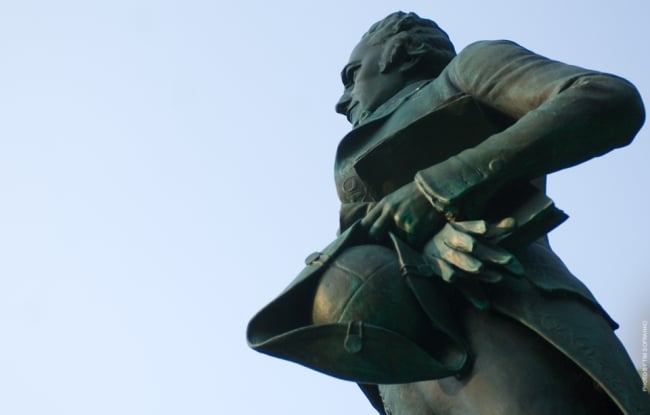You have /5 articles left.
Sign up for a free account or log in.

Alexander Hamilton
Hamilton College
Like many campuses, Hamilton College in New York has over the past two years faced criticism from student protesters that it isn't doing enough to honor its commitment to inclusion. Unlike many such campuses, Hamilton adopted a new curriculum requirement that all concentrations, or majors, feature relevant, mandatory course work on diversity.
Yet Reynolds, a biologist, said it’s not as hard as one might imagine to see how science and diversity intersect. There are the disproportionate effects that a natural disaster such as Hurricane Katrina had on some populations, he said, or the public health crisis in Flint, Mich. “These science courses might examine contemporary issues, for example, but also address them and apply the scientific method to see what’s going on.”
Barrie, the spokesperson, said that one scientist on the faculty is considering a course that reinforces the scientific method as a way of evaluating hypotheses around issues of race, ethnicity and gender using data. "Students might explore genetics in biology or the consideration of race on drug trials," she said.
Department plans will be vetted by a subcommittee of the faculty Committee on Academic Policy. The committee will review the requirement after three years.
Rather than a potential drawback, Reynolds said he and other faculty members saw the concentration-specific requirement as a virtue -- one that will benefit students who have to navigate real-world problems.
“If we’d had a diversity course that everyone had to take, I don’t think that would have been supported by the faculty,” Reynolds said. “Quite a lot of people saw this as being quite a pragmatic approach, tailored to students’ needs and interests. … This is a way of preparing them for their lives post-Hamilton in a real and practical way.”
Others aren’t convinced.
“In other words, students must be exposed to the leftist obsession with groups,” George Leef wrote last week in the National Review. “Whatever else they might study, the faculty leftists will shove this stuff down their throats. Doing so, they hope, will plant the seeds of numerous progressive tropes about society in young minds.”
Robert Paquette, a professor of history at Hamilton, said he wasn’t a fan of the college’s “open” or, in his words, “no curriculum, which is nothing less than a great betrayal of liberal arts education, traditionally understood.” Yet the new requirement seems to have been “imposed” on that much-publicized curriculum, he said.
Moreover, Paquette said, diversity in the proposal is vaguely defined. He said that’s something that’s been revealed as a concern in internal communications about the proposal, even among its faculty supporters.
“Is it not eye-opening that a supermajority of the faculty would approve of imposing a requirement based upon a concept, ‘diversity,’ that was never precisely defined before it was voted on?” Paquette said via email. Pointing to the economics department’s description, he asked, “Will departments be drawing up lists of ‘approved courses’? Which courses will be included? Which courses will be excluded? Does the understanding of ‘diversity’ include viewpoint diversity, and would, e.g., my course on conservative thought make anyone's list? Would all history courses make the list? Or none, or some?”
Rabinowitz, who helped draft the proposal initially as part of a faculty subcommittee on diversity in the curriculum and later as a member of a faculty working group, said it’s the faculty’s attempt to make the college’s educational principles concrete.
The faculty is in charge of the curriculum and it’s “our responsibility to make good on the college’s stated values,” she said, including its mission that students learn to “embrace difference” and “engage issues ethically and creatively.”
Placing the requirement within the concentration stays true to the open curriculum, she added, in that it doesn’t add another graduation requirement.
“More important, though, it helps students understand how their chosen course of study fits with the society, indeed world, that they inhabit," Rabinowitz said. “Individual departments can decide what their students need to know in order to succeed in their discipline. That will differ for humanists, artists, social scientists and scientists. The flexibility is the beauty of the requirement Hamilton has created.”





